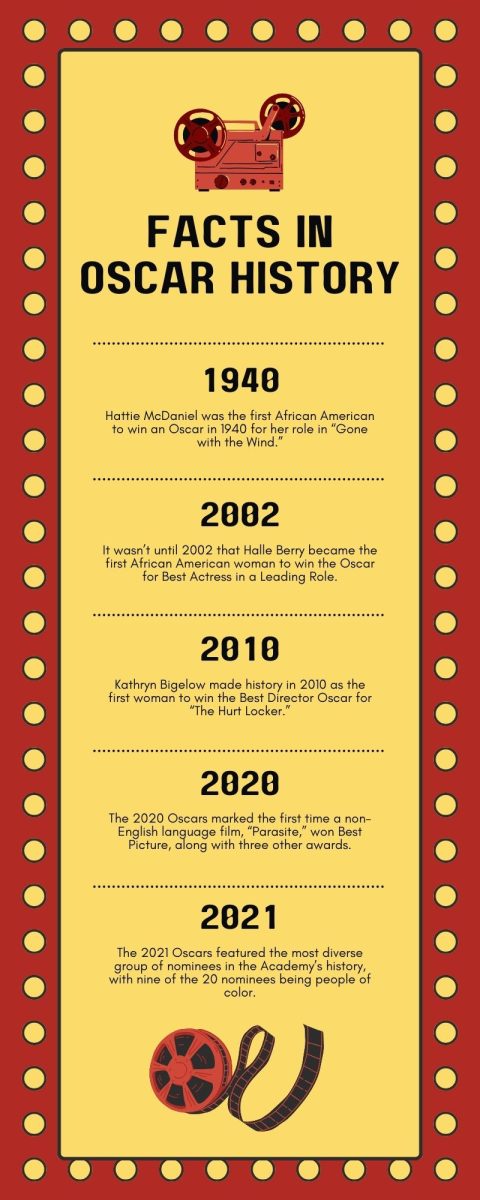On March 10, the world discovered who the Academy deemed the best in their respective categories. The Oscars have been a staple of cinematic excellence since 1929. However, previous years have shown that various categories have lacked representation of people of color.
For many years, the Oscars were predominantly dominated by white actors and filmmakers, leading to a significant imbalance in recognition. This lack of representation is not only reflected in the awards themselves, but also in the membership of the Academy of Motion Picture Arts and Sciences, which votes on the nominees and winners.
The issue of diversity at the Oscars came to a head with the #OscarsSoWhite campaign on X [formally known as Twitter], which began in 2015. The campaign highlighted consecutive years [2015-2016] where no actors of color were nominated in any of the four acting categories, sparking widespread conversation about racial inequality in Hollywood.
Their calls for change did not go unheard. The entertainment industry took responsibility for their growing criticism, and the Academy took steps to broaden its membership. In a 2020 initiative, the Academy pledged to double the number of women and minority members by 2020, a move aimed at making the voting body more reflective of minorities.
Along with broadening membership of voters, The Oscars also expanded the number of Best Picture nominees to up to ten films. This allows for broader ranges of movies with minority filmmakers and diverse casts to be considered for the Oscar.
The change in membership is significant in these situations, as Oscars have the chance to spark careers and create new jobs for actors, crew, and directors. When nominations continuously go to the same stories, with the same perspectives, newer stories aren’t talked about enough. The Oscars should be shedding light on new stories, while not being overshadowed by other films.
Nominations this year have progressed, though very little. Of the 200 nominees in 2024, 20% were from underrepresented racial and ethnic groups. Less than 6% of the nominees were women of color. While these may not be the greatest statistics, 2024 stands third across 96 years of nominations for underrepresented people of color.
The most notable snub was the lack of a nomination for the thought provoking romantic-drama Past Lives, starring Greta Lee as Nora. Past Lives is a film that explores the interconnectedness of individuals across lifetimes. Instead of a nomination for Lee the nomination went to five-time, white, Oscar nominee Annette Bening in Nyad.
On a more positive note,, there has been progress within the nominations of underrepresented women. This year marks the first time an Indigenous American has been nominated for Best Actress. Lily Gladstone received a nomination for her portrayal of Mollie Kyle, survivor of the Osage murders, in the Killers of the Flower Moon.
“It has me thinking about conscious prejudice and what merits prestige in our culture,” Lupita Nyong’o, empower-centered artist and previous Best Actress Oscar winner, said. “The Awards should not dictate the terms of art in our modern society, but rather be a diverse reflection of the best of what our art has to offer today. I stand with my peers who are calling for change in expanding the stories that are told and recognition of the people who tell them,” [Popsugar].



